📣 For more lifestyle news, click here to join our WhatsApp Channel and also follow us on Instagram
Where have the supermodels gone?
With Bollywood and e-commerce taking over the ramps, what is keeping fashion's style icons busy?
 "Supermodels were born out of a brand’s assertion. They built global loyalists with their beauty, charisma, unattainable perfection and sex appeal," says Marc Robinson. (Photo source: Express Archive. designed by Dinkar Sasi)
"Supermodels were born out of a brand’s assertion. They built global loyalists with their beauty, charisma, unattainable perfection and sex appeal," says Marc Robinson. (Photo source: Express Archive. designed by Dinkar Sasi) Young Marc Robinson loved to travel the world, saving up every dime, as a masters student at the Delhi School of Economics in the late ’80s. But it was the duty-free shops in New York and Amsterdam that had him mesmerised. The brand stores had riveting models in neon, with red lips, piercing eyes and scruffy beards, selling not just a product but the idea of perfection. Those images never left his mind, they lingered, like the fragrance of the perfume in those travel kits.
“These gorgeous faces were the soul and essence of the products. I remember Cindy Crawford’s iconic Pepsi ad of 1992. It seared the cola culture in our consciousness… I was starstruck by Naomi Campbell too, how she made everything so desirable,” says Marc, 58, one of India’s early supermodels. He too, loved dressing up. He would be immaculately turned out for Sunday mass, in a suit that compelled his neighbours in Vasant Vihar to call him the Raymond man, then a hallmark brand of menswear.
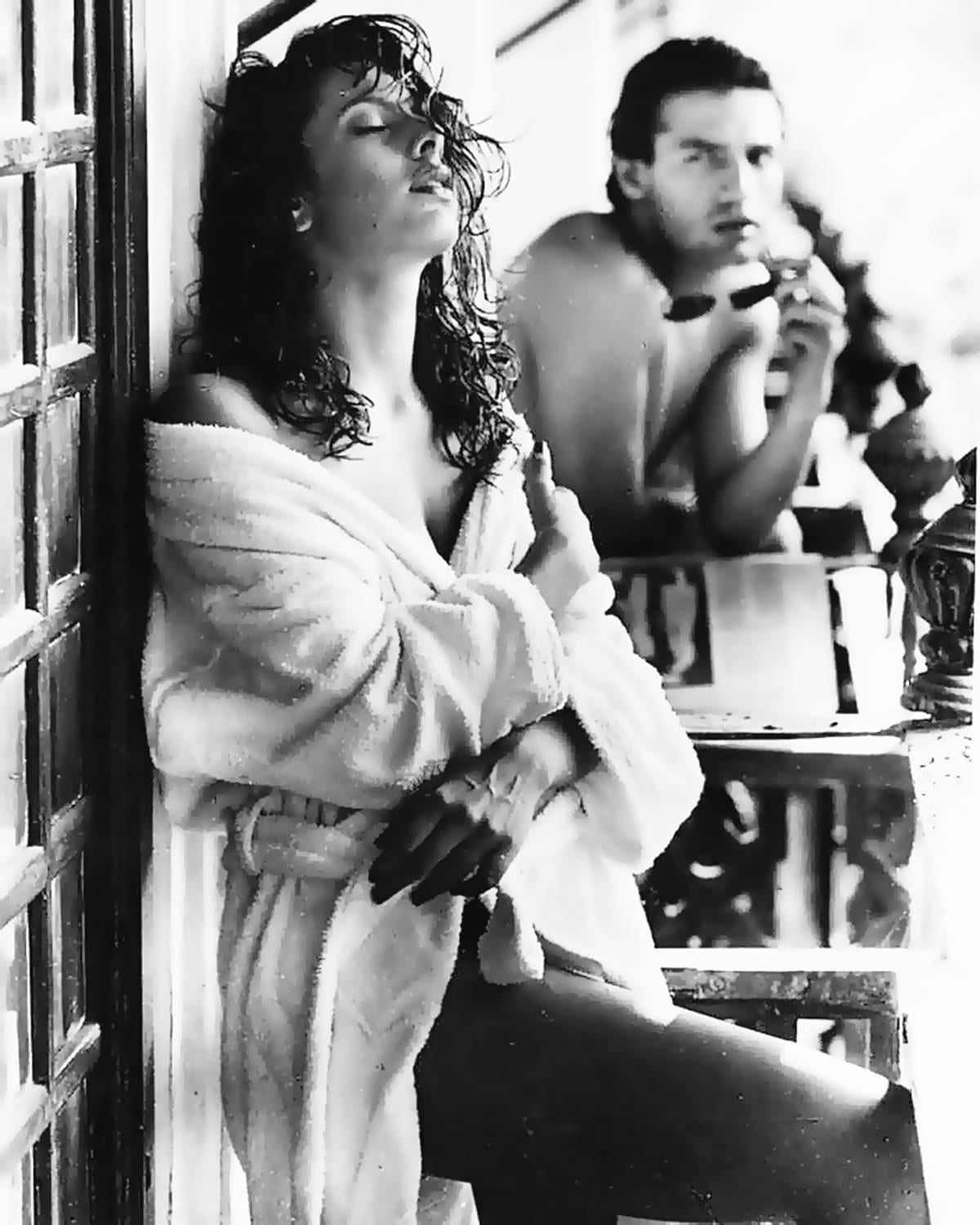 Marc Robinson with Pooja Bedi in the Kama Sutra ad in the early ’90s
Marc Robinson with Pooja Bedi in the Kama Sutra ad in the early ’90s
Marc is now a pageant director and talent-grooming expert, curating international fashion weeks. “Supermodels were born out of a brand’s assertion. They built global loyalists with their beauty, charisma, unattainable perfection and sex appeal. This staying power, in everyone’s mind, like an addiction, is what differentiates supermodels from models,” he says.
In those early years after-liberalisation, when “made in India” was yet to be a keystone in image building, Marc, with others, were crafting this idea on the modelling scene. “I remember bumping into designer Rohit Khosla and model Mehr Jessia at the airport, sometime in 1990. Rohit, who was a true creative spirit, referred me to photographer Prabuddha Dasgupta, who was then a copywriter and twiddling with the camera for fun. Soon, I found myself modelling for the FUs brand of denims by Intershoppe,” he says. FUs, an acronym for Fits You Superbly, was an intended pun for anti-tradition and rebellion. “That attitude made us stars. Clothing brands such as Vimal, Raymond and Garden Vareli commanded the market and the faces that launched their seasons became poster girls or boys; our presence on the ramp came later. I remember growing my hair, and, surprisingly, my mother endorsed my choice, saying she had seen such hairstyles in the soap opera, The Bold and the Beautiful. She even suggested I make a ponytail,” says Marc. With Milind Soman and Arjun Rampal, and female models such as Feroze Gujral, Madhu Sapre and Jessia, they scorched a trail for others to follow.
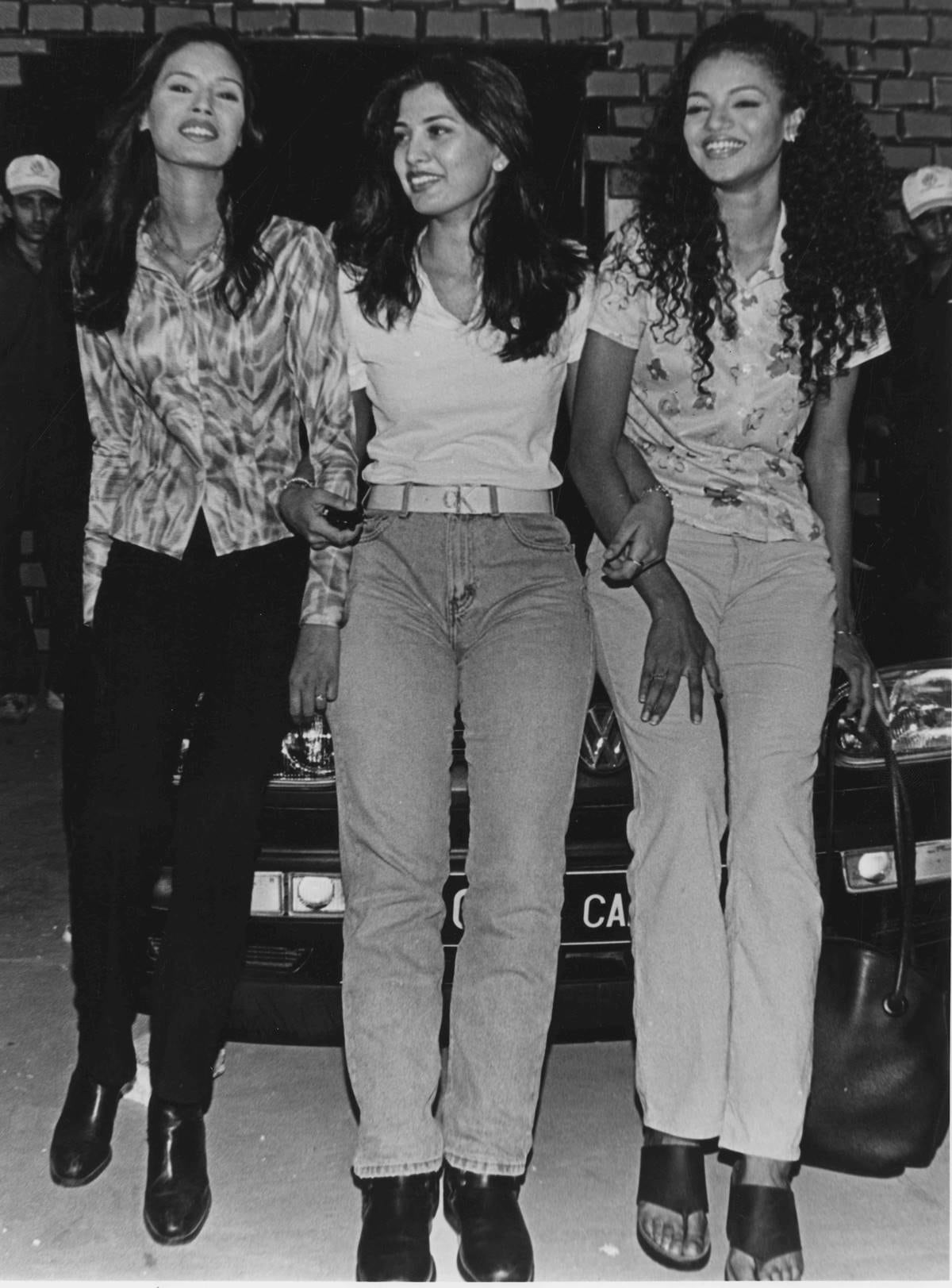 Fashion designer Ritu Beri, center, holding two models. On her left is Nayanika Chatterjee. (Express Photo by Hemant Chawla)
Fashion designer Ritu Beri, center, holding two models. On her left is Nayanika Chatterjee. (Express Photo by Hemant Chawla)
Fashion showcases would happen at Ghungroo’s, at the time Delhi’s only discotheque, or at Ensemble, India’s first designer store in Mumbai. It was often an outcome of a huddle with designers like Rohit Khosla, Rohit Bal and JJ Valaya. It also helped that most of these supermodels came from elite backgrounds. Through his father, who was country head at American Express, Marc was exposed to the best of fashion, from clothes and shoes to music and turntables. “We were makers of our own destinies. Creativity came before commerce,” says Marc.
Rohit is often called the pioneer of Indian fashion. He had worked with top designers in New York and had been surrounded by the finest minds in design, as a student at Kingston University, UK. He would choreograph ramp shows and groom an entire generation of supermodels, teaching them to own their walk under the arc lights. And they kept coming, the breed of self-taught but spirited people on the ramp — Shyamolie Verma, Sheetal Malhar, Carol Gracias, Dino Morea. “People wanted to know us, touch us, be us,” says Marc. He became the face of the Kama Sutra campaign with Pooja Bedi, beaming down from hoardings and flooding ad breaks on satellite TV in 1991. “I was one of those who was unapologetic about looking and feeling good. After the Kamasutra campaign, everybody knew my name. I had girls, boys, women and men wanting my autographs. Designers, too, fed this craze by signing me up for all their shows. Magazines followed me and the money was more than good. Sociologically speaking, I think everybody had this spark. That’s why the Kamasutra ad was all the rage,” he says.
Then came Nayanika Chatterjee in 1989. With her angular features, dusky skin, piercing eyes and curly mane, she was a disruptor. For three decades, every designer wanted her to be a show-stopper. This south-Delhi girl, from an Army background, turned down offers from Paris, because she wanted to live and work in India.
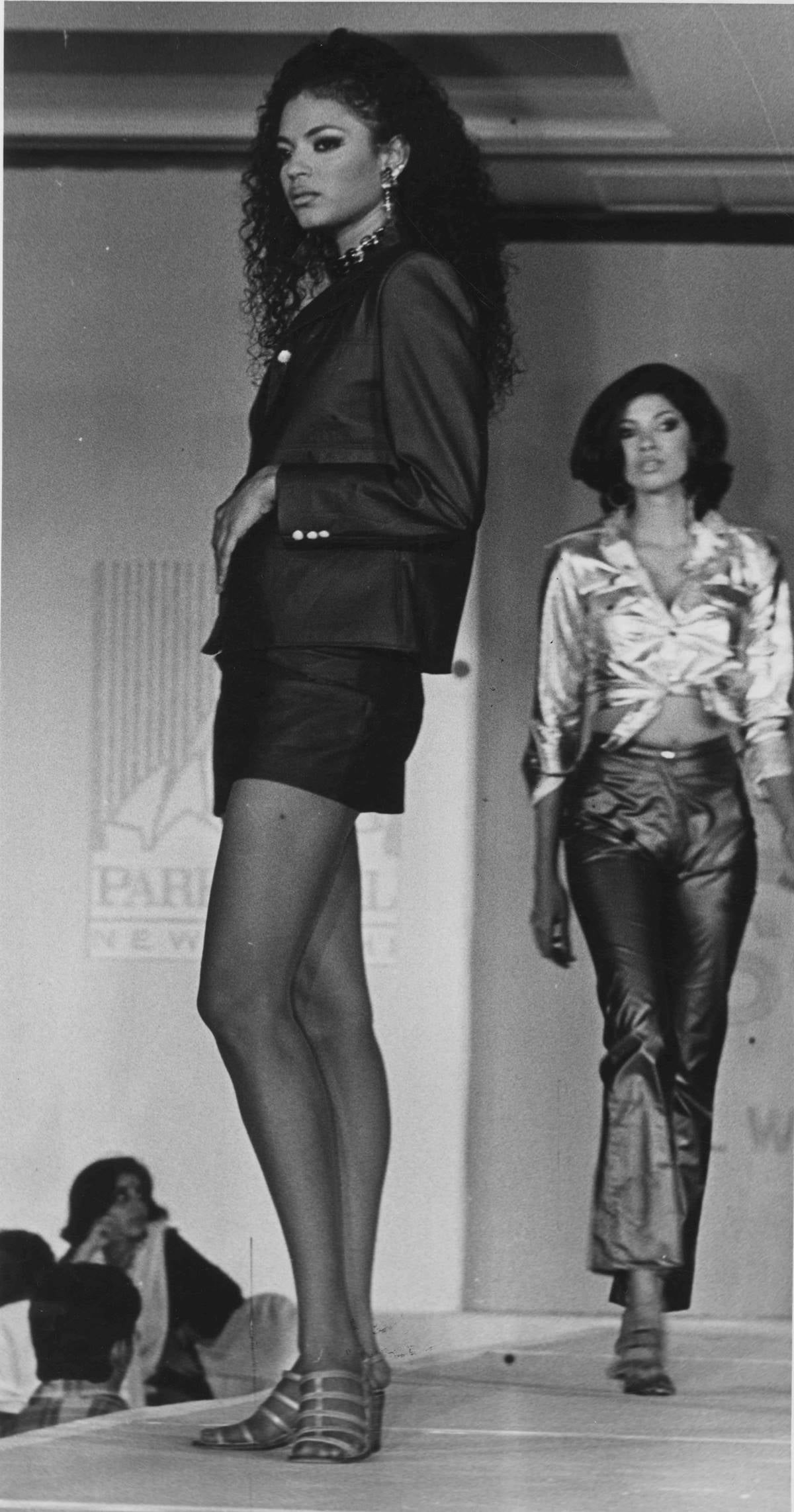 Model Naynika Chatterjee walks the ramp at a fashion show in New Delhi. (Express Photo by Hemant Chawla)
Model Naynika Chatterjee walks the ramp at a fashion show in New Delhi. (Express Photo by Hemant Chawla)
Now as she sits in her Sainik Farms home in Delhi, she unpacks what it meant to be a supermodel. “Nobody hand-held us, we had the first-mover advantage. Perhaps, our individualism overshadowed the designer. We became bigger than we were meant to be. Currently, modelling is an organised profession, with agencies and training academies churning out talent on a mass scale. I was spotted by a fashion choreographer by chance because they needed somebody to do a show for The Oberoi Trident. While most of us didn’t need to be a model to survive, we kept going for the sheer pleasure it gave us. Then, fashion was about couture, now it is an industry display,” says Nayanika, an alumnus of Ahmedabad’s National Institute of Design. In these last two years, she’s been running and curating an online crafts platform. Looking back, she wonders if she could have matched the pace and number of shows that girls have to do today. “We rehearsed for a week, now the girls get only half-an-hour of prep time on show day,” she says.
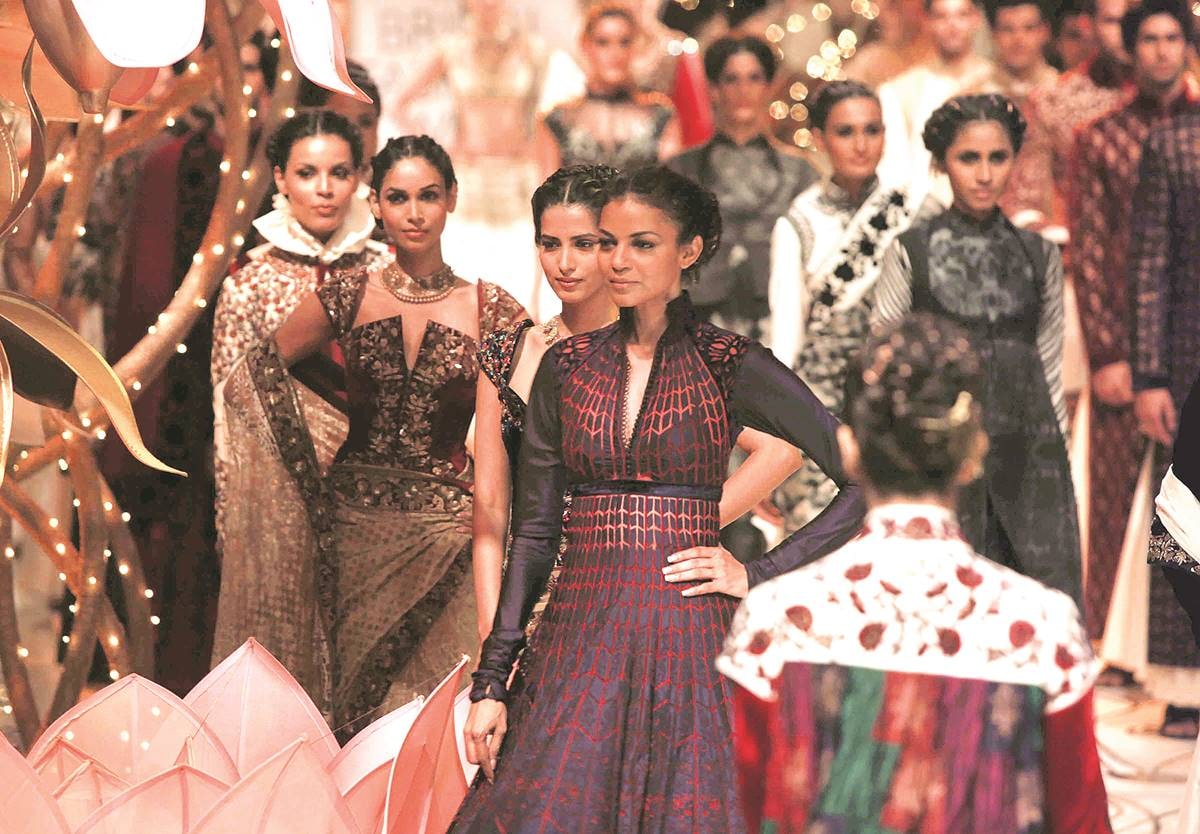 Models walk the ramp in Rohit Bal designs at the Bridal Fashion Week in New Delhi on Friday. (Express Photo by Amit Mehra New Delhi 26 July 2013)
Models walk the ramp in Rohit Bal designs at the Bridal Fashion Week in New Delhi on Friday. (Express Photo by Amit Mehra New Delhi 26 July 2013)
Nayanika is among the true-blue supermodels, who have either retreated into the shadows or chosen alternative careers. However, internationally, supermodels still command industry cred. Fifty-six-year-old Cindy was asked to recreate her iconic ad in 2021, while last year, fashion magazine Vogue feted Gisele Bundchen, 42, on the cover, calling her “Goddess Energy.” Both feature among 2023’s power list of top international models, still retaining their total net worth, despite a slew of new arrivals on the ramp.
Sunil Sethi, president, Fashion Design Council of India (FDCI), is witness to this transition over decades. “Modelling as a profession has been democratised. There were too few models back then, who looked at modelling as an alternative pursuit. Today, it is an evolved career and has freshers applying year after year. Pret has taken off and for the business of fashion to make sense, you need relatable, fresher and younger faces… This has led to an inclusiveness, at one level. FDCI itself has size-inclusive and gender-agnostic models that this generation can relate to. However, in the couture business, designers still stick to supermodels,” he says.
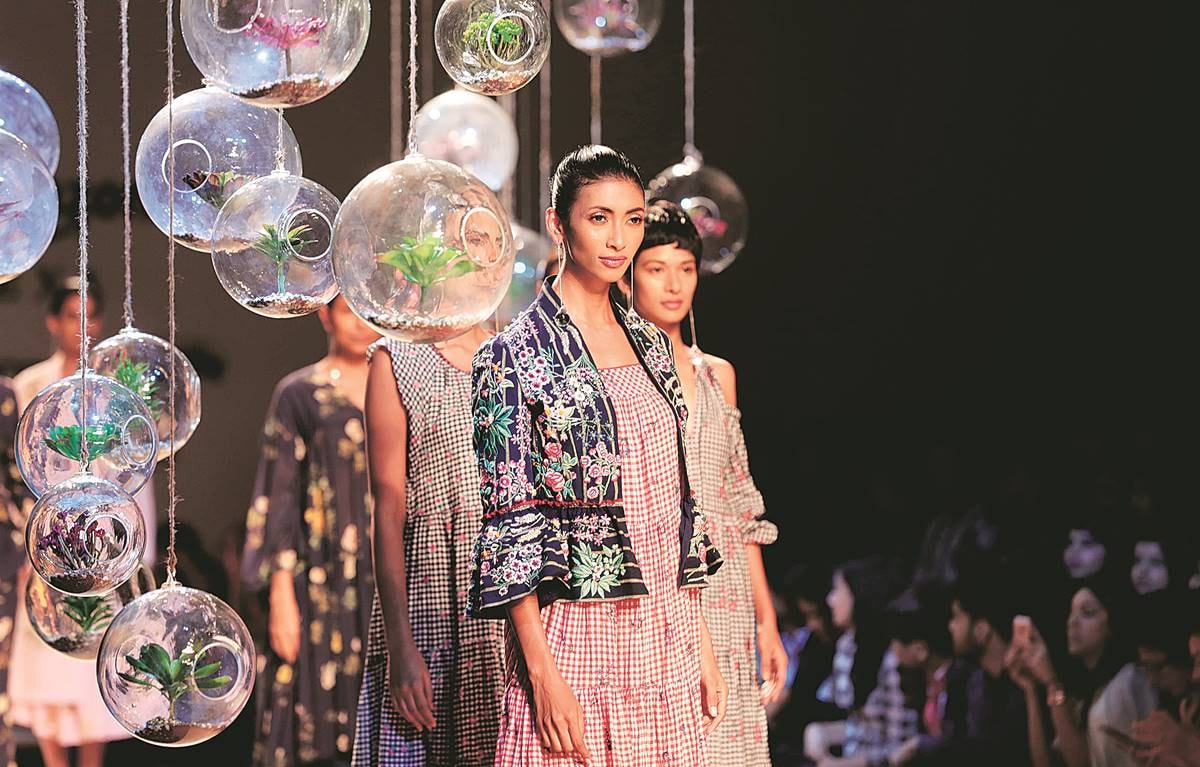 Models walk the ramp with fashion Designer Payal Prtap’s colletion during Show. (Express Photo By Amit Mehra 13 octoberv 2017)
Models walk the ramp with fashion Designer Payal Prtap’s colletion during Show. (Express Photo By Amit Mehra 13 octoberv 2017)
Fashion shows, too, have become more thematic, larger than life and are not personality-oriented anymore. Besides, with corporate retail majors commanding the pret market and young models looking for work, appearance fees have become competitive, making it difficult for supermodels to jack up their prices or get them in the first place.
Marc recalls he was paid Rs 5,000 for his first show. About 15 years ago, it moved up to anything between Rs 50,000 and a lakh. “Now the fashion industry needs a clotheshorse and will take anybody for Rs 15,000,” he says.
With changing times, pay structures too, have taken a beating. “So long as models do their basic job for the brands, they do not feel the need to professionalise rates. In the West, the supermodel still personifies a fashion house. Don’t get me wrong, modelling is still a good profession here, there is inclusivity but there’s no fame left. That art of being a muse is lost. Till the fashion industry respects the role of a model, there’s no hope for a rightful place,” says Lakshmi Rana, who has been walking the ramp for top designers since 2000.
Both Lakshmi and Nayanika testify that some sponsors do not even bear hospitality costs these days. In fact, Lakshmi recalls the time when all models would collectively bargain prices for a show. “Now people will even work free for an opportunity,” she says.
As a young girl, Lakshmi was already getting many offers to do fashion events in Dehradun because of her international looks. She signed up for Miss India in 2000 at the insistence of her mother. “She told me that I should position myself as a model from the right forum. If I failed, I could go back to studies. I was exposed to a personality development regime at Miss India, which had experts from every sector. I made it to the top five with Lara Dutta, Priyanka Chopra and Dia Mirza. But I was never charmed by films as I got a lot of love and attention by walking down the ramp, role-playing every girl’s dream.”
The last of the supermodels, Lakshmi now runs her own model grooming academy, the Wilderbee Talent Camp in Gurugram. Her courses are not just about grooming or nailing the beauty pageant but about holistic personality development and future-proofing students for adaptability in allied professions. “The young don’t harbour illusions. They want to negotiate and adapt, in an industry where one is easily replaceable,” she says.
Looking at the larger picture though, three cultural shifts have resulted in the death of the supermodel.The first is Bollywood. The second is the digital media where young influencers have carved out a sizable constituency for themselves, lucrative enough for brands to amplify their message. The third is e-commerce, where retail brands are more focussed on showing off a three-dimensional view of their clothes than the model wearing it.
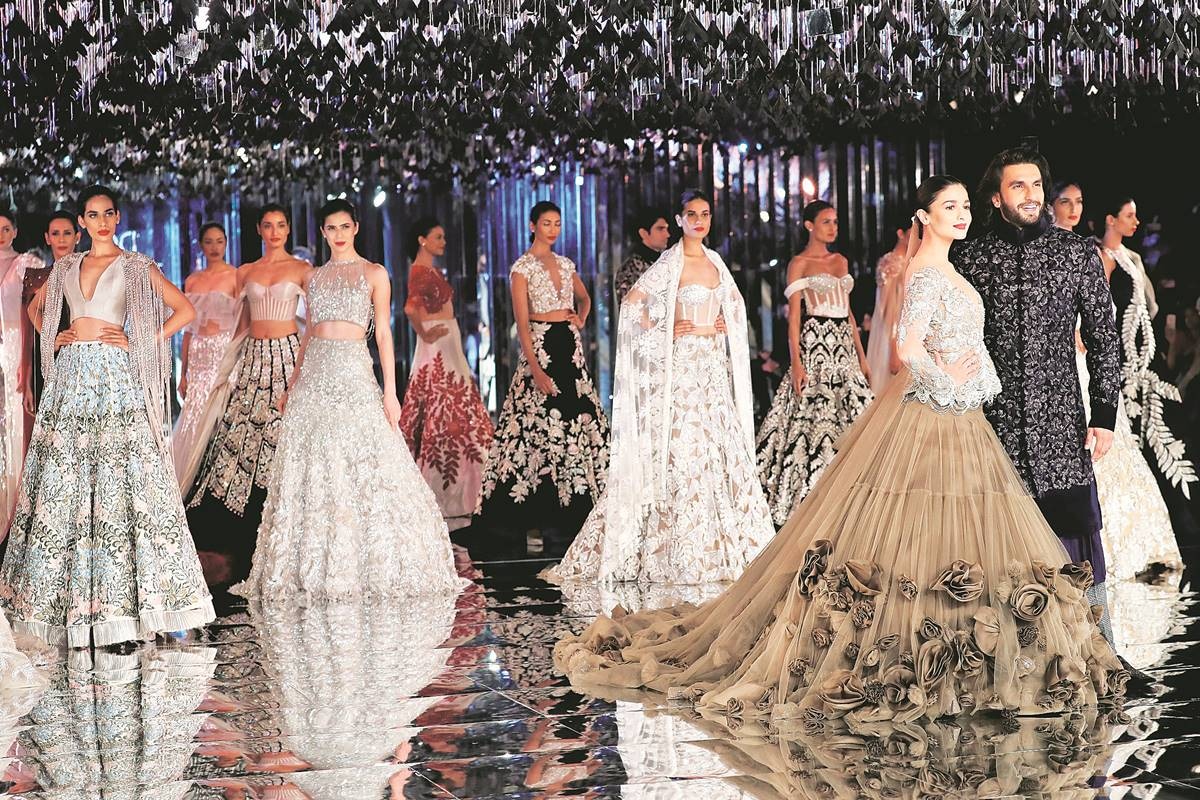 A Manish Malhotra show with Alia Bhatt and Ranveer Singh, in foreground ( Fashion Design Council of India)
A Manish Malhotra show with Alia Bhatt and Ranveer Singh, in foreground ( Fashion Design Council of India)
“The fashion industry doesn’t mind paying crores to a Bollywood star, even starlets, as a show-stopper but will have issues about paying decent fees to a top model,” says Lakshmi, 42.
But would Bollywood have had such a hold if top-notch models themselves didn’t cross over? Sunil argues that once supermodels – be it Milind, Dino, Deepika Padukone, Katrina Kaif or Aishwarya Rai — ruled the ramps and magazines, but blurred the lines when they decided to do films. That merged the two distinct roles of the celebrity and the star.
The crossover also meant that pageant winners, following the footsteps of 1994’s Miss Universe Sushmita Sen and Miss World Aishwarya, made a beeline for Bollywood. “Modelling is now just a bridge for getting to Mumbai from a Tier II or Tier III city, even to featuring in a serial or OTT show,” says Marc.
Of course, big designers like Tarun Tahiliani, Rohit Bal and Sabyasachi still rely on supermodels to do their talking on the ramp, but at a time, when social-media following is everything, Nayanika says, “My 33 years of work translate into 7,000 odd followers, while a newcomer with three-lakh followers decides market value. How do you rate experience?”
📣 For more lifestyle news, click here to join our WhatsApp Channel and also follow us on Instagram


- 019 hours ago
- 029 hours ago
- 0315 hours ago
- 0449 minutes ago
- 0515 hours ago

























